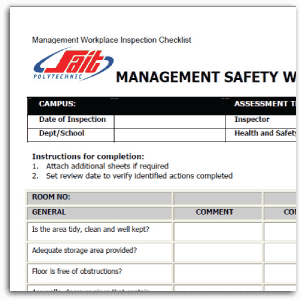
The best way to identify potential issues before they become big problems is through consistent assessment. Whether assessing customer satisfaction, employee performance or marketing initiatives, the key is to never stop. And while most organizations consistently assess certain areas, constant safety assessments are as important as any other. Talentclick’s Safety Quotient is an innovative employee risk assessment that targets safety at all stages of the employee life-cycle: pre-hiring, onboarding, developing current employees & data tracking
Many organizations across Canada have utilized a “Stop and Think” safety program that looks at safety procedures every time an employee moves to a different part of the job or starts a new task. By implementing such a thorough and deliberate plan, these organizations have been able to drastically reduce incidents while also increasing employee accountability and emphasizing a safe workplace culture. Safety never sleeps and neither should your safety assessment.
“Stop and Think” safety assessments are designed to be simple and often break down safety into three steps:
- Identify the hazards
- Assess the risks
- Control the risks
All employees can play their part in identifying hazards. When a new job is about to start or they are working in a new area, have them complete a simple safety assessment. Example questions that each employee should answer include:
- “Is the area clean, well kept and free of potential hazards?”
- “Are all tools and equipment properly maintained, stored and in good working order?”
- “Do you understand the main tasks required to complete this work?”
- “Do you have all necessary safety gear needed to complete the job?”
- “Is the health and safety policy posted nearby?”
- “Do you understand the posted safety policy?”
- “Do you know who the safety supervisor is?”
- “Do you know what to do in case of an injury incident?”
These example questions all help identify potential risks while also making the most complacent employee an active participant in safety policy. Constant checks make safety a priority, especially when employees know that any hazards they identify will be promptly assessed and controlled by management.
Not only do these employee questionnaires help identify potential risks and hazards, they force employees to slow down when going from job to job. While slowing down isn’t the best way to boost productivity, taking five minutes to assess a new work space and consider the potential safety issues allows the employee to clear their head, think critically about the upcoming task and re-calibrate. Employees being in a rush and ignoring the potential hazards is the main cause of many accidents and are also the easiest to avoid. Plus, a safe and healthy employee is much more productive than an injured one.
While employee safety assessments are a critical part of any successful “Stop and Think” program, the onus is still on management to follow-up with these assessments and respond accordingly. The data returned from these assessments can shed light on a particularly dangerous area of the shop and it is up to management to assess and control these potential risks.
If your organization never stops assessing risks you’ll find that even the busiest, most complacent employees will make safety a priority.











